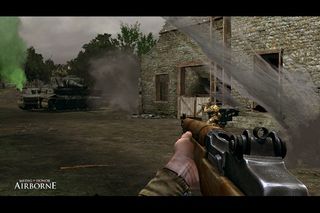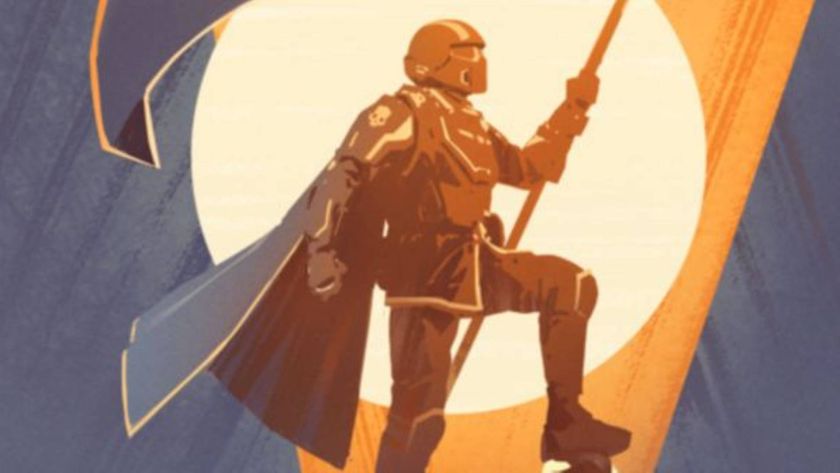Interview with Medal of Honor: Airborne's Executive Producer
Patrick Gilmore dissects EA's war machine
One of the big problems with European Assault (a PS2 MoH) seemed to be an over-reliance on incidental rewards like medal tokens. Will Airborne feature reward that’s more inherent in the action?
Gilmore: [pauses] Let’s just say it can be very, very challenging when you have an innovative feature in a game; there’s a strong temptation to celebrate it, often by putting additional icons on the HUD or whatever. And sometimes you integrate a feature but you realize it’s not as well understood by the user as you thought it would be. You go to a focus group and people say, “I don’t know whether I’m crouched or if I’m standing.” And suddenly you’ve got a crouch meter on the screen. It does tend to clutter up the HUD and create a “gameyness” to the whole thing.
One of the things we hit on over a year ago was the idea of shock versus injury, and that gave rise to Airborne’s health meter. Call of Duty had that Halo-style system where you could seek cover and recharge completely, and it was really controversial. If you read the reviews there were a lot that said it was really fake and a lot that said, “It’s great - I really don’t want to manage my health while I’m trying to have fun.”
So as we were thinking about that, we asked, “What happens to a soldier when they’re hit by a bullet?” Well the first thing is that you go into shock - in your mental space you’re thinking that you’re way more injured than you actually are. But you can recover from that, leaving just the injury. So we created a hybrid system that was part shock and part injury - you can recover part of the damage but there are permanent thresholds. That felt as close to the real experience as we could get.

Sign up to the 12DOVE Newsletter
Weekly digests, tales from the communities you love, and more

Ex Nintendo PR managers say the Switch 2 generation is likely to see the retirement of "several of the major developers at Nintendo who we have known for 40 something years"

Helldivers 2 CEO says industry layoffs have seen "very little accountability" from executives who "let go of one third of the company because you made stupid decisions"











